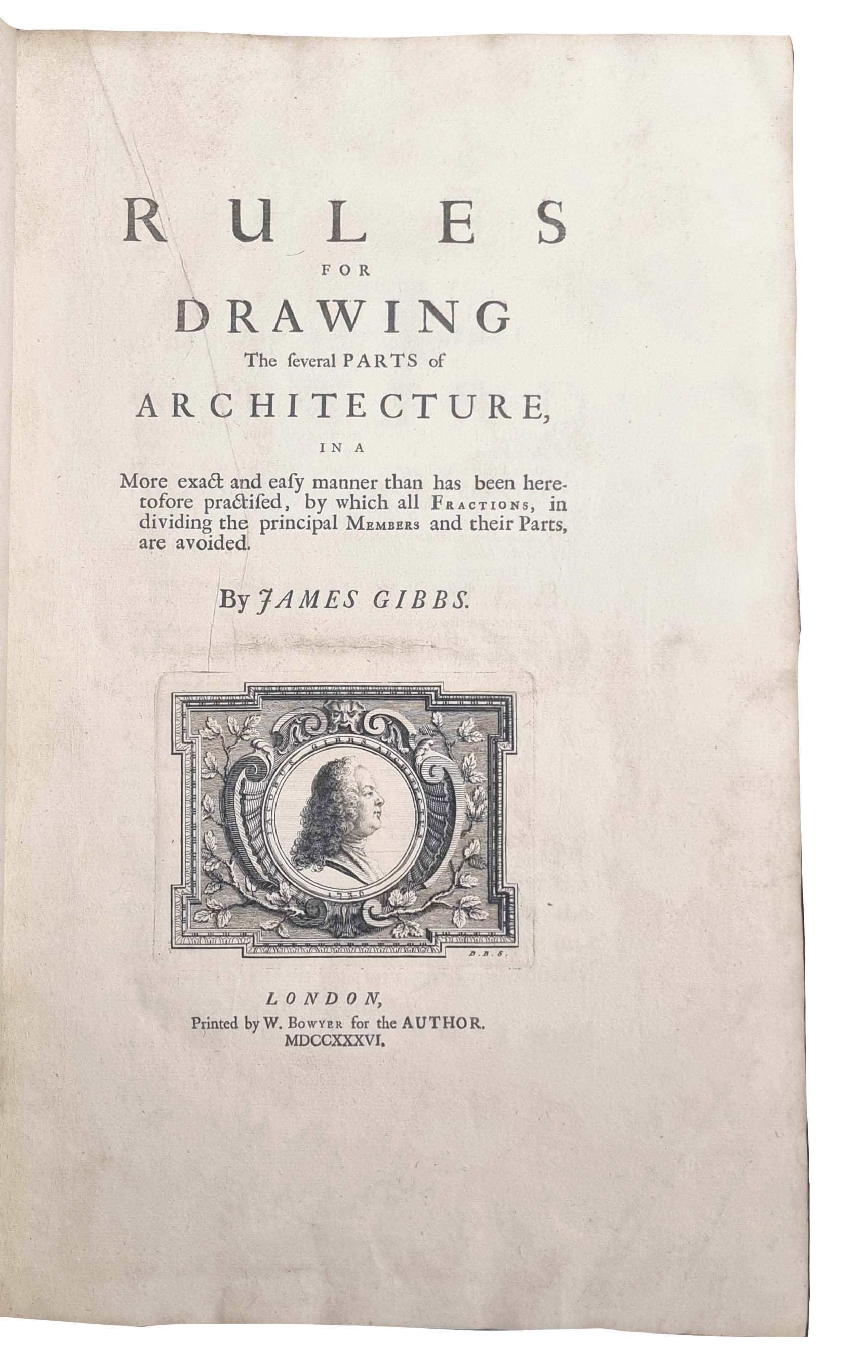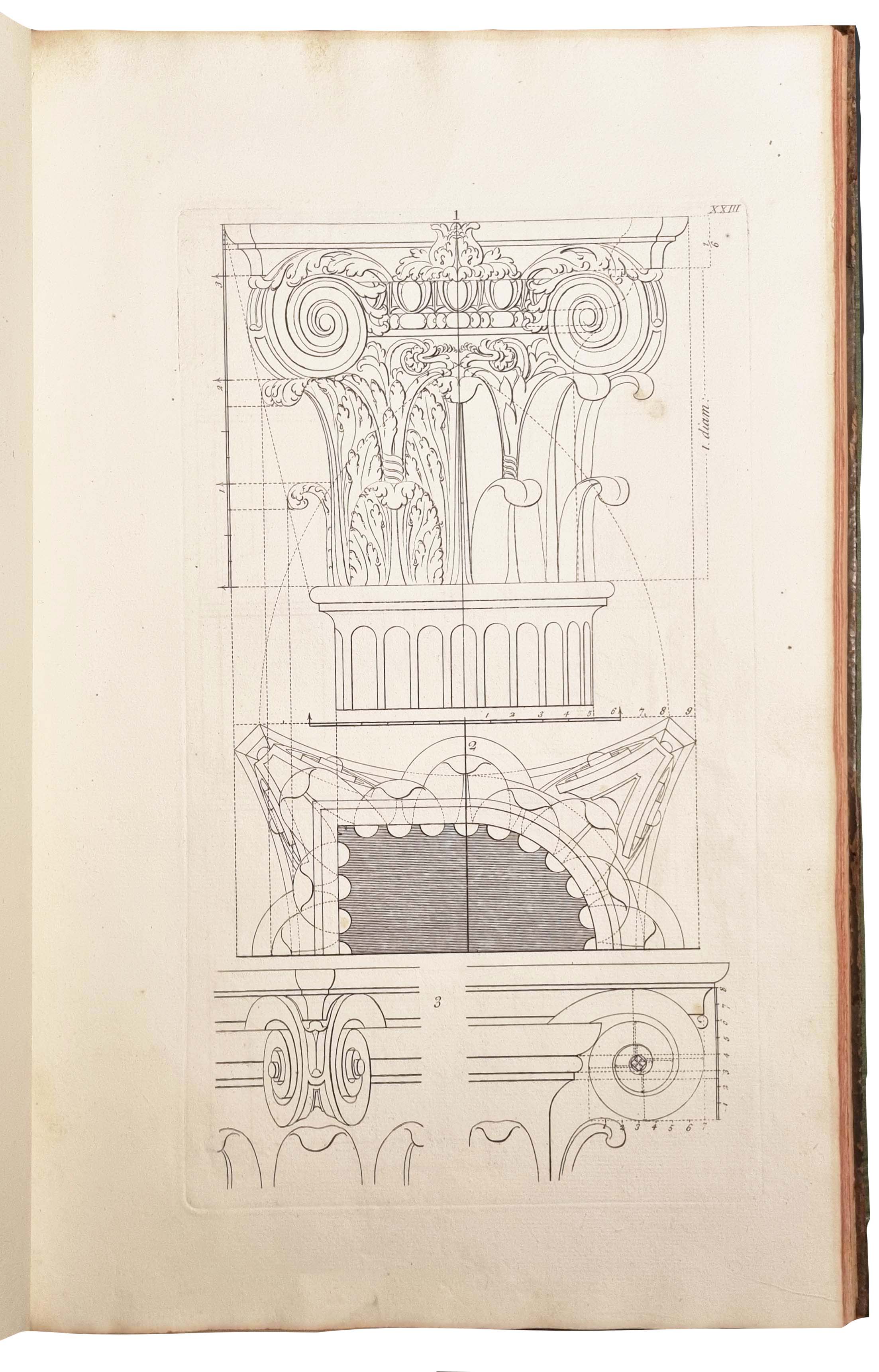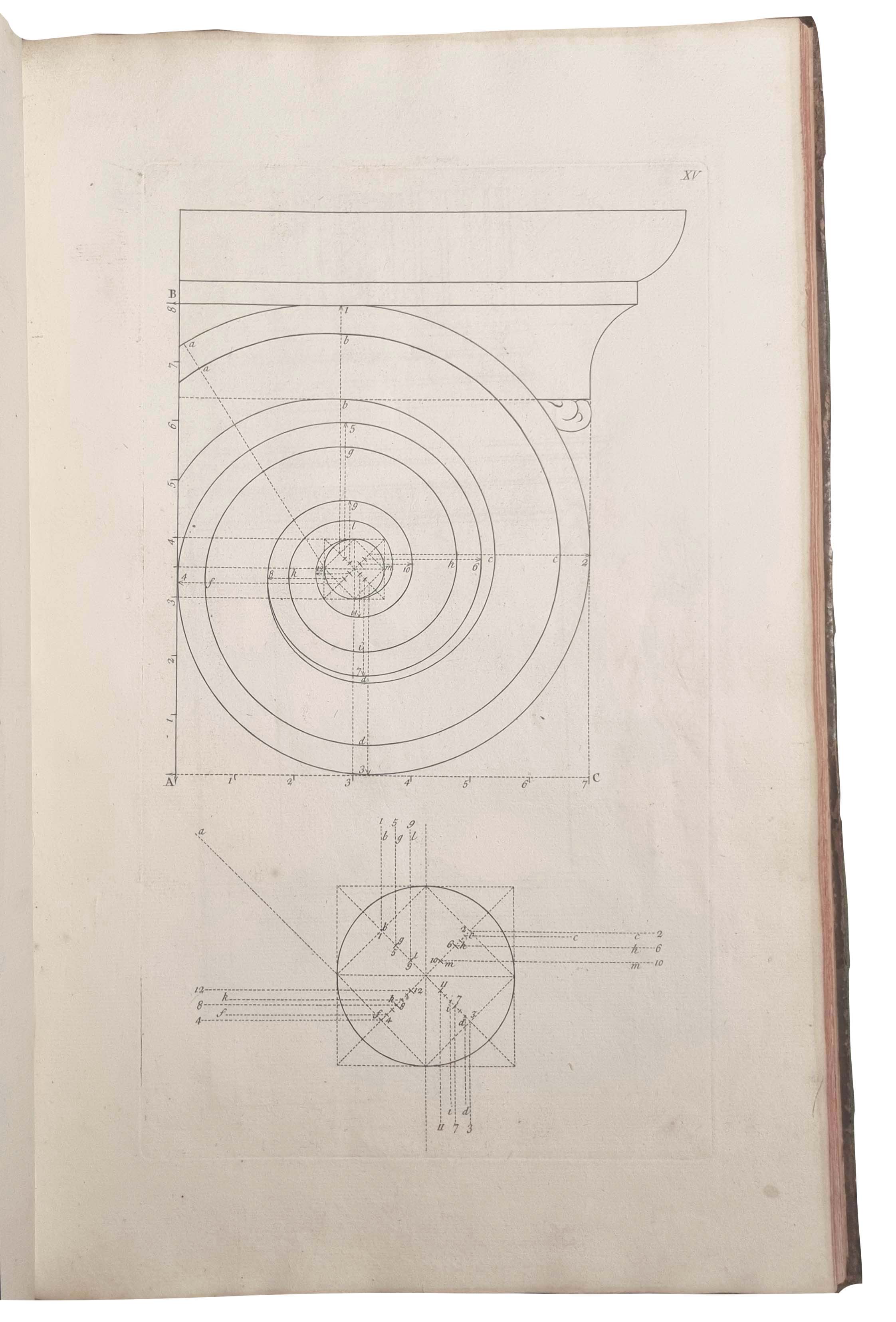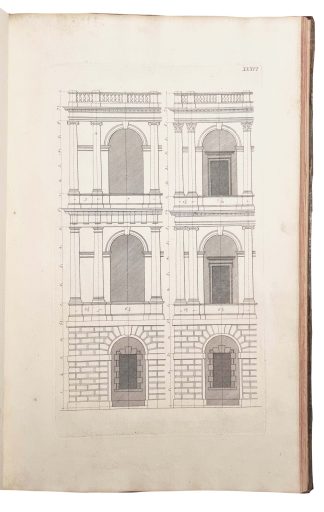GIBBS, James.
Rules for Drawing […]
London, W. Bowyer, 1736£2,750.00
Folio. pp. [8] 42 [1], plus 64 full page plates of drawings by James Gibbs, depicting architectural sections, plans and pattern detail in the Doric, Ionic, Corinthian, and Tuscan orders, all in excellent impression. Roman letter, little italic. T-p vignette with profile of Gibbs by Bernard Baron (c.1696-1762), royal arms at head of dedication to George II. Pages yellowing, edges slightly browned, a little light foxing and the occasional small marginal stain. A good, well-margined copy, on thick paper, in contemporary speckled calf, worn and rubbed at outer corners, rebacked, a.e.r.
A crisp copy of the second edition of Gibbs’ second work focussing on the art of drawing architectural orders and their ornamentation, with a ‘more exact and easy manner than has been heretofore practised’. This entailed a conscious effort to avoid complex fractions, which were employed in the works of Palladio (1508-1580) and Gibbs’ rival, Colen Campbell (1676-1729), presenting difficulties for those wishing to follow their methods since ‘exactness on paper could not ensure correct translation to wood or stone’. Gibbs instead divided ‘the orders mechanically into parts’, splitting these further into progressively smaller sections, thereby preserving Palladio’s laws of proportion and using a simpler technique. This system is clearly explained in the text corresponding to the plates and is further elucidated visually through dotted lines, numbers and letters labelling each image. This volume guides the reader through general proportions of each order, focusing on individual elements such as capitals, pedestals, dentils, cornices, bases, architraves, and larger structures such as arches, doors, gates, chimney pieces and windows. The plates are executed in a sketch-like line drawings, suitable for a treatise on the art of drawing. More detailed architectural drawings, such as the Corinthian capital, are divided, each side with a different level of detail illustrating the different stages of the process of designing the structure.
The portrait of Gibbs on the title page was executed by Bernard Baron (c.1696-1762), a French etcher and engraver, accomplished in engraved reproduction of portraits and paintings, including works by Holbein, Titian, Hogarth, Rubens and Van Dyck. The architect trained in Italy and came to be the pupil of Carlo Fontana. Gibbs is renowned for his influence over secular and religious architectural designs in the US and England for the following hundred years, extending even to the President’s House in Washington. Among his greatest achievements are St-Martin-in-the-Fields, the Senate House in Cambridge and the Radcliffe Camera in Oxford. During his career, he experienced mixed fortunes, starting the early 1720s in poverty and suffering humiliation when he was the only prominent living architect whose name was excluded from Campbell’s 1725 third volume of ‘Vitruvius Britannicus’, despite it featuring some of his work. Despite these setbacks, Gibbs encountered huge success, his books proving to be especially popular, and went on to create some of the most iconic structures in England today.
England today. ESTC: --, Harris 260 (second edition), Lowndes 887 (precise edition not present), not in FowlerIn stock






